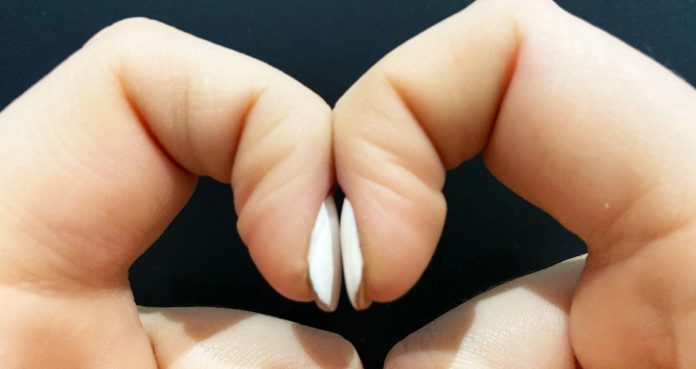A medical expert has revealed that a simple “finger trick” could help diagnose lung cancer.
Oncology Nurse Advisor at Bupa UK Emma Norton has been asking people to put the nails of their index fingers together, making the top of a heart, in order to detect any respiratory tumors.
People could see a diamond-shaped gap between their nails and if they don’t, it could be an indication of “finger clubbing,” warned Norton.
According to Cancer Research UK, finger clubbing is an unusual sign that may occur in more than 35 percent of patients with lung cancer.
Norton told HuffPost, “Most people with lung cancer don’t know their fingers are clubbing unless they know specifically to look out for it.”
“The test is used by medical professionals as a partial method of confirming conditions, but you can also do the test yourself, and it only takes a few seconds,” she added. “If you can’t see any kind of gap beneath your nail beds, this means your fingers are clubbed.”
The oncology nurse has recommended people to see their PCPs if they notice such a change in their nails. However, finger clubbing may also run in some families so there is no need to panic right away. It is better to get it checked with your PCP.
In medical terminology, “clubbing” is described as a change in the shape of the nails and fingers, which starts with the softening of the nail bed and the surrounding skin becomes shiny. Eventually, the nail looks more clubbed and curved when viewed from the side.
Finally, the nails and the fingertips become large like a “drumstick.”
In advance cases, extra bony-lie tissue is formed on the fingers, which is often mistaken for rheumatoid arthritis.
According to BMJ Best Practice, “Finger clubbing tends to be painless and can affect just one finger.”
How is it associated with lung cancer? It is unclear why finger clubbing occurs; however, it is presumed that excess fluid accumulation at the end of the digits could give rise to such a condition, per Cancer Research UK.
Finger clubbing may occur due to greater blood flow to the end digits or the hormones or chemicals released by certain tumors, including respiratory tumors.
The BMJ Best Practice says that low oxygen levels in the blood could also trigger finger clubbing by releasing a protein called “vascular endothelial growth factor.” This can eventually lead to cell division and swelling of the nails. Even oncologists across the world have found that finger clubbing is often linked to lung cancer.





















